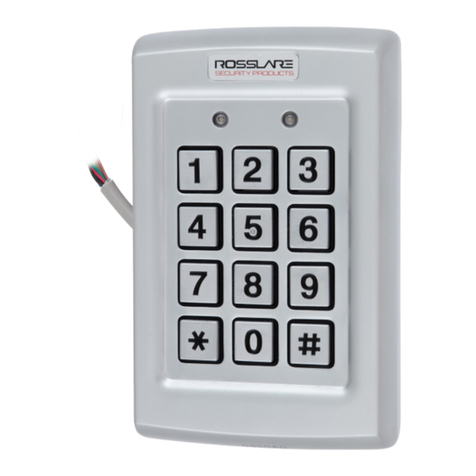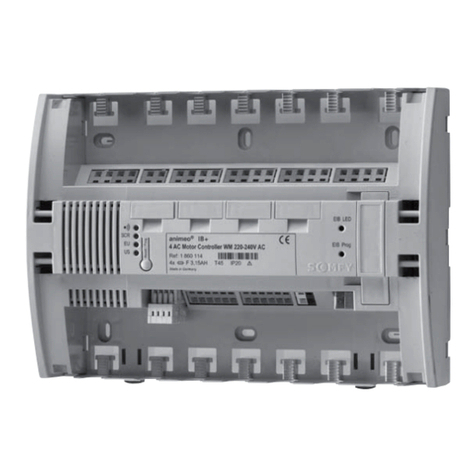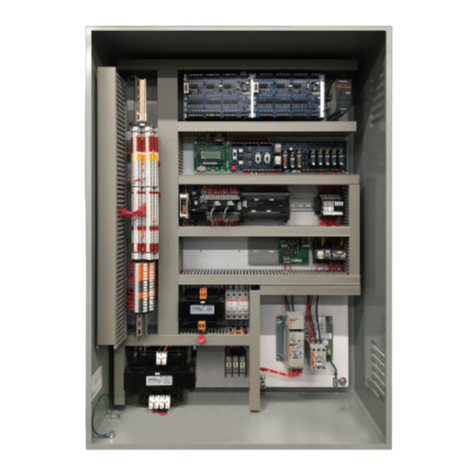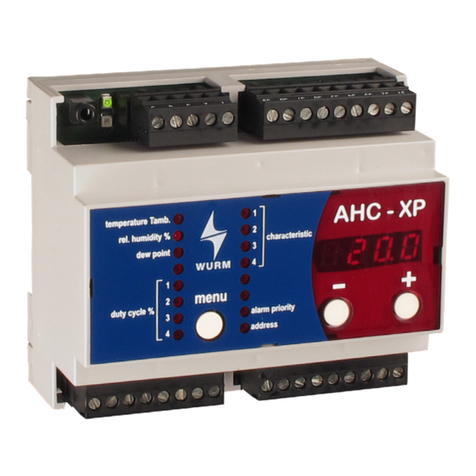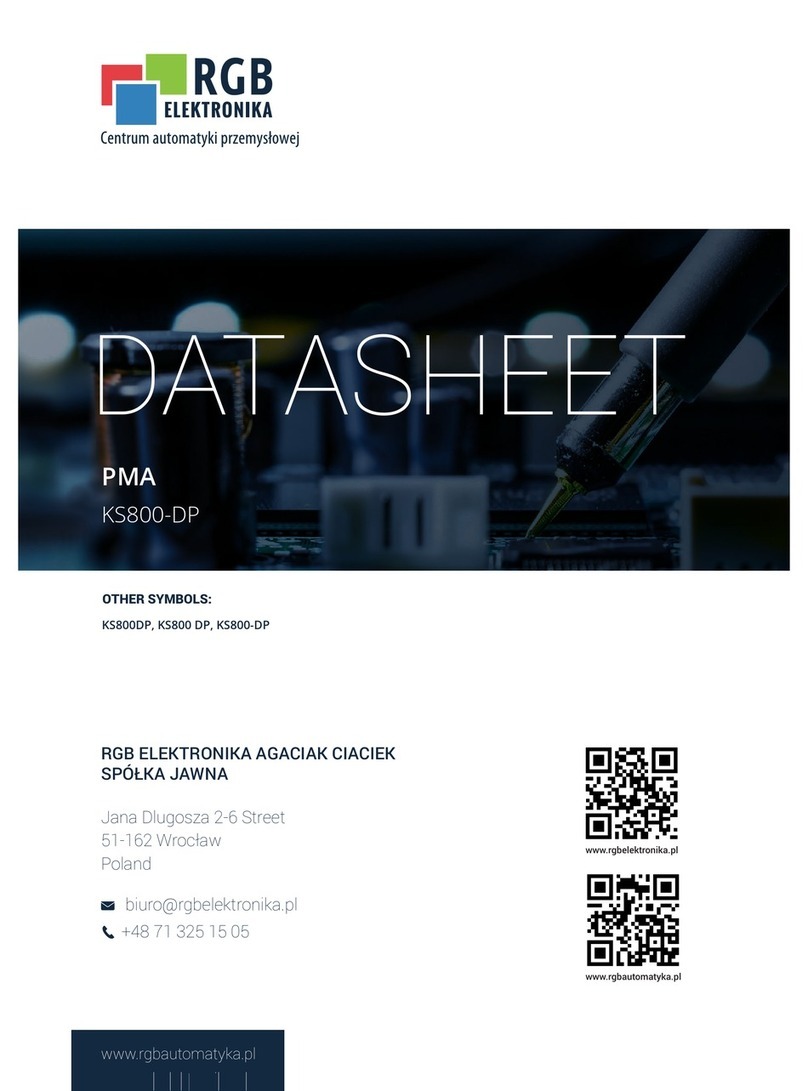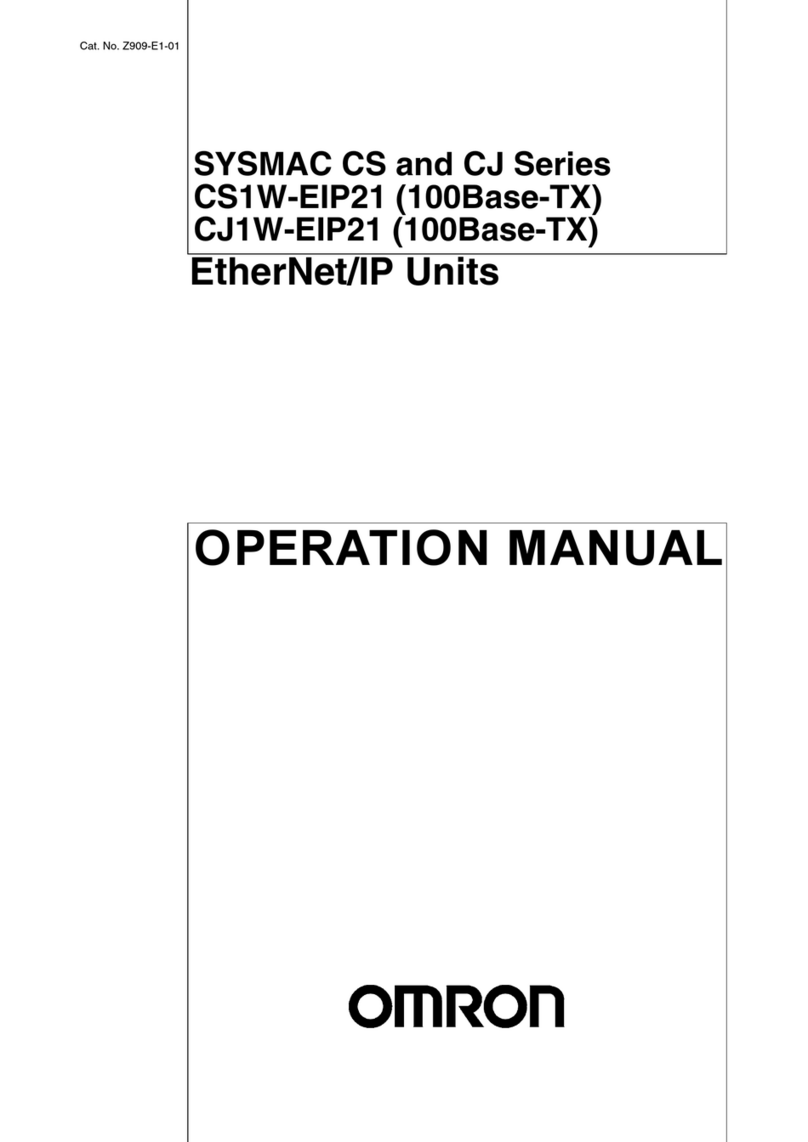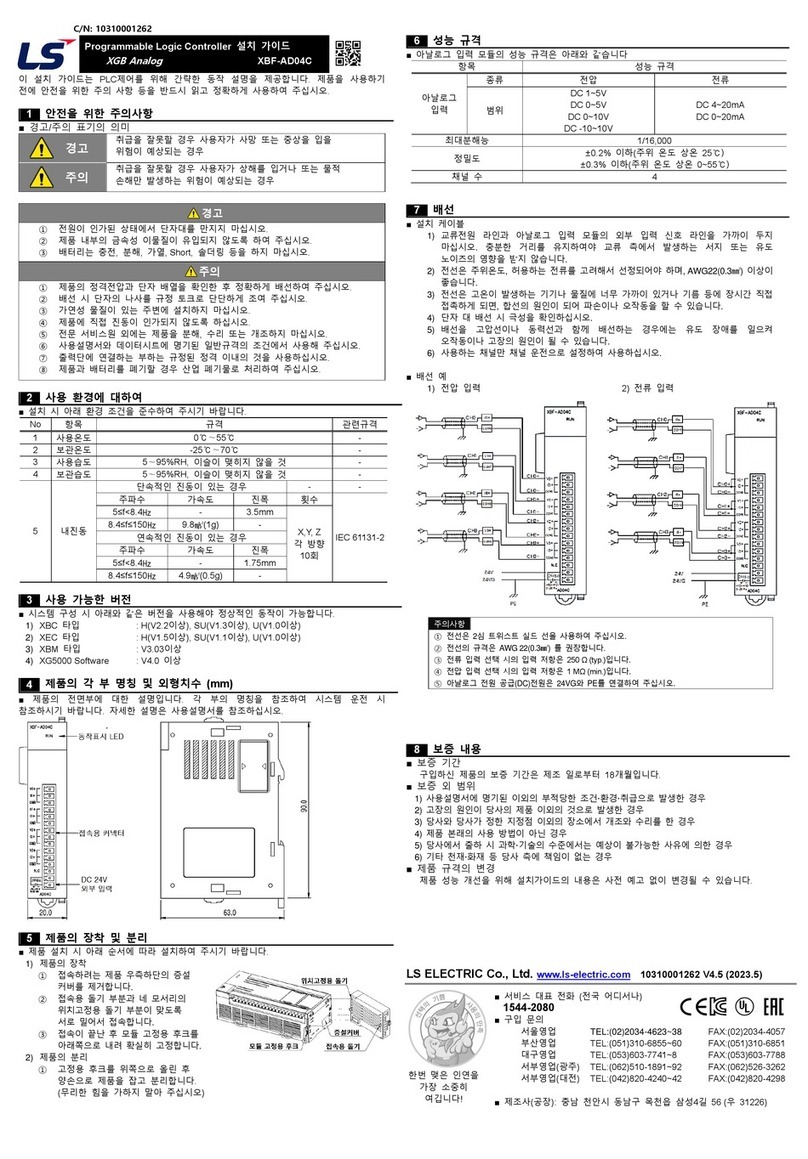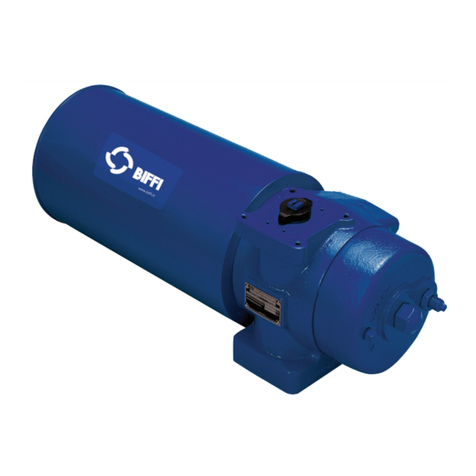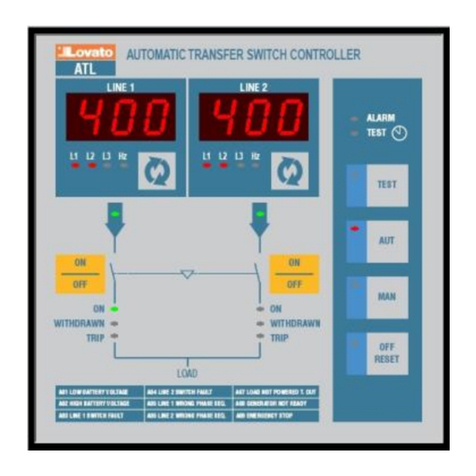Teshow TS81B User manual

Digital PIDController
TS80B-E1
Carefully readall theinstructions inthis manual.Please place
this manualin aconvenient locationfor easyreference.
WARNING
CAUTION
(4) Control output[OUT]:
M:Relay contact V: Voltagepulse
8: Current(DC4 ~20 mA) 5:DC0-5VDC
6: DC0-10VDC T:Trigger (fortriac driving)
(5) Remark:
N: No
(6) Alarm1[AL1 for highalarm] See"5.5 "
N: No alarm
A: Deviationhigh alarm H:Process high alarm
(7) Alarm2[AL2 for lowalarm] See"5.5 "
N: No alarm
B: Deviation lowalarm J: Processlow alarm
(8) Power
A: 220VAC B 85-265VAC D 24VDC E 24VAC
Initial Setting
Initial Setting
!
TS80B-E1
INSTRUCTION MANUAL
1
An externalprotection device must be installed iffailure of this
instrument could resultin damage to the instrument, equipment
or injury topersonnel .
All wiringmust be completedbefore power inturned on toprevent
electric shock, fireor damage toinstrument and equipment .
This instrument must be used in accordance with the
specifications to prevent fire or damage to instrument and
equipment.
This instrument is not intended for use in locations subject to
flammable or explosivegases.
Do not touch high-voltage connections such as power supply
terminals , etc.to avoid electricshock.
This instrument is protected from electric shockby reinforced
insulation. Provide reinforced insulation between the wirefor
the input signal and the wires forinstrument power supply, source
of power and loads.
This instrument is design for installation in an enclosed
instrumentation panel. All high-voltage connections such as
power supply terminals must be enclosed in the instrumentati on
panel to avoid electric shock byoperating personnel.
All precautions describedin this manual should be taken to avoid
damage to the instrument or equipment.
All wiring mustbe in accordance with local codes andregulations.
Always observe precautions described in this manual.
Otherwise serious injury or accidentmay result.
Do not allow metalfragments or lead wire scraps to fallinside this
instrument. This may cause electricshock, fire or malfunction.
Firmly tighten each terminal screw at the specified torque.
Otherwise electric shock or fire mayresult.
Do not place any obstacle around this instrument in order
not to impede radiation of heat.And do not close ventilationholes.
Do not connect wires tounused terminals.
Before cleaning the instrument,always turn off the power supply.
Remove stains from thisinstrument using a soft,dry cloth. Do not
use a volatile solvent such asthinner in order toavoid deformation
or discoloration.
Do not rub norstrike the display unit of this instrumentwith a hard
object.
-
1. PRODUCTCHECK
-
(1) Control action
F: PID reverseaction with autotuning
(1)(2) (3) (4) (5) (6)(7) (8)
(2) Input type,(3) Range code: See"8.INPUTRANGE TABLE"
Check MODELand CODE
is very importantwhen ordering.
2.1 MountingCautions
2. MOUNTING
(1) Use this Instrument within the following ambient
temperature and ambienthumidity.
Allowable ambienttemperature: 0 to50
Allowable ambienthumidity: 45 to85% RH
(2) Avoidthe following whenselecting the mountinglocation.
Rapid changes inambient temperature whichmay cause condensation.
Corrosive or inflammablegases.
Direct vibration orshock to themainframe.
Water,oil,chemicals,vaporor steam splashes.
Excessive induction noise,static electricity,magnetic fields ornoise.
Direct air flowfrom an airconditioner.
Exposure to directsunlight.
Excessive heat accumulation.
C
TS81B/TS84B/TS85B/TS87B/TS89B
TS85B
TS84B
TS89B
TS87B
TS81B
Example
Model: TS89B Specification:
Model of thecontroller:TS89B
Size: 96mm x96mm
Control action: PIDreverse action
Input: K typethermocouple
Out put: Relayoutput
Alarm: 1 deviationhigh alarm (AL1)
Power: AC220V
Code: FKA4-MN*AN-A
2.2 Dimensions
TS81B
50 14.6
50
44.0
44.0
58.0
80
13.6
11
TS84B
TS85B
50 14.6
96
44.0
90.0
104.0
80
13.6
11
74 14.6
74
67.5
67.5
80.0
80
13.6
11
UP
TS87B TS89B
90
96 14.6
96
90.0
104.0
80
13.6
11
UP
Unit:mm Unit:mm
Unit:mm Unit:mm

2
(1) Prepare thepanel cutout asspecified in 2.2Dimensions.
(2) Insert theinstrument through thepanel cutout.
(3) insert themounting bracket intothe mounting
groove of theinstrument. Fig.1
(4) Pull tillchick sounds tothe direction
shown by thearrow.(Fig.2)
(5) The other mounting bracketshould be installed
the same waydescribed in 3.to 4.
2.3 MoutingProcedures
Fig.1
Mounting bracket
UP
Fig.2
UP
3. WIRING
3.1 Wiringcautions
(1) For thermocoupleinput, use thespecified compensation wire.
(2) For RTDinput , useleads with lowresistance and havingno resistance differencesamong the 3leads.
(3) Conduct inputsignal wiring awayfrom instrument power, electric equipmentpower and loadlines to avoidnoise induction.
(4) Conduct instrumentpower wiring soas not tobe influenced bynoise from theelectric equipment power. If theinstrument may beaffected
by external noise,a noise filtershould be used.
* Shorten thedistance between twistedpower supply wirepitches. The
shorter the distancebetween the pitches,the more effectivefor noise
reduction.
* Install thenoise filter onthe panel whichis always groundedand minimize
the wiring distancebetween the noisefilter output sideand the instrument
power terminals.
* Do notinstall fuses and/orswitches on thefilter output signalsince this may lessen filter effect.
(5) For wiring,use wires conformingto the domesticstandard of eachcountry.
(6) Abot4 to 5seconds are requiredas the preparationtime for contactoutput after poweron. Use adelay relay whenthe output lineis used foran
external interlock circuit.
(7) This instrumenthas no powersupply switch norfuses. Therefore, installthe fuse closeto the instrumentand the switch,if required.
*Recommended fuse rating:Rated voltage; 250V Rated current; 1A * Fuse type;Time-lag fuse
(8) Do notexcessively tighten theterminal screws. Inaddition, use thesolderless terminal appropriateto the screwsize.
(9) To the instrumentwith power supplyof 24V, please besure to supplythe power fromSELV circuit.
instrument power Twist theseleadwires
IN OUT
Noise filter
Shorten distance between
pitches Minimize
distance
Instrument
power
terminals
3.2 Terminal Configuration
TS81B TS84B TS85B TS89B
11
12
13
14
NO
LN
1
NO
RTD
TC,VDC
2
3
4
5
6
7
8
9
10
A
B
B
NO
AL1
OUT Voltage Current
For SSR mA
AC220V 10%
AC220V 10%
AC220V 10% AC220V 10%
mA
AL2
TS87B
L
N
1
NO
RTD
TC,VDC
2
3
4
5
8
9
10
11
12
A
B
B
OUT
6
7
13
14
NC
AL2
NO
Voltage
For SSR
NO
Current
mA,V
AL1
mA
NC
L
N
1
TC VDC
2
3
4
5
6
7
8
9
10
NO
NO
AL1
OUT
RTD
A
B
B
11
12
13
14
15
NO
NC
AL2
16
17
18
19
20
mA
Current
mA,V
Voltage
For SSR
Powersupplyvoltage:
(Frequency 50/60Hz Rating 200~240VAc)
7VAmax(at 100VAC) 10VA max(at 240VAC)
5VAmax(at24VAC) 160mAmax (at24VDC)
Alarmoututrated:
22to26VAC
(Frequency 50/60Hz Rating 24VAC)
22to26V DC Rating 24VDc
Powerconsumption
Relaycontactoutput TS84B TS85B TS87B TS89B 250VAC,3A(Resistiveload)
TS81B250VAC1A(Resistive load)
Controloutputrated
Relaycontactoutput: 250VAC,3A(Resistiveload)
Voltagepulseoutput:0/12V DC(Loadresistance 600 or more)
Currentoutput:4 to20mADC(Load resistance500 or less)
Triggeroutput(fortriacdriving):100Aor less Theterminalarrangement of TS85B is as shown inthe
followingdiagram, butthe terminalconfigurationof
TS85Bisthe same asthatofTS84B. TS80B-E1
(1)All the underhookups are onlyfor reference.
(2)For wiring, pleaseaccording to thehookup label whichwas glued onthe plastic caseof controller.
CAUTION

4. PARTS DESCRIPTION
1
2
3
4
567
Toavoid damage toinstrument, never usea sharp
object to presskeys.
1. Measured value(PV) display [Green]
* Displays PVor various
parameter symbols
3. Indication lamps
*Control output lamps(OUT,OFF)
[Green] OUT:Light when output is turned on.
[Red]OFF:Light when outputis turned off.
4. (Set key)
Used for parameter
calling up andset
value registration
7. (Up key)
Decrease numbers
6. (Down key)
Decrease numbers
CAUTION
5. Shift &Assistant key
2. Set value(PV)display [Red]
* Displays SVor various
parameter set values
SET
*Alarm output lamps(AL1,AL2)
[Red]
AL1: Lightswhen alarm 1output
is turned on.
Al2: Lightswhen alarm 2output
is turned on.
*Autotuning (AT) [Green]
Flashes when autotuningis
activated.
5. SETTING
5.1 Callingup procedureof eachmode *1. Input typeand input rangedisplay
This instrument immediatelyconfirms input typeand range followingpower on.
Example: For acontrolleer with theK thermocouple inputtype and rangefrom 0 to1300 C.
1. Input typedisplay
:Indicates input type(See table **A)
**A: Input typetable(see "14.0 Inputrange table")
Power on
Power on
Input type display
Input range display
Display changes automatically
(Display for
approx.5 sec)
PV/SV display mode
(Normal display)
The instrument returns tothe PV/SV
display mode statusif key operation
is not performedfor more than1 minute.
SV setting mode
Parameter Setting Mode
(PID level)
Press theSET key Press the
SET key
*1
Initialization Mode
(Input level)
Press theSET key
for 3 sec.
Press the
SET key
for 3 sec .
Press the
SET key
for 3 sec .
SV
PV
: Input rangehigh
Display
Display
Input
Input
K
Pt100
J
Cu50
ES
DC0-5V orDC0-10V DC2-10V
N
DC1-5V or
T
Thermocouple
Standard analog signal(Voltage and current)
Resistance thermometer
B
W5Re/W26/Re
R
DC0-20mA DC4-20mA
Press the keywhile
pressing theSET key for
3 secretary.
5.4 PIDlevel (ParameterList)
Press the "SET "key for 3seconds to PIDlevel
The followingparameter symbols aredisplayed one byone every timethe SETkey is pressed.
After the valuebe registered ,youcan press "SET"keyfor 3 seconds to return theinstrument
to the PV/SVdisplay mode.
Symbol Name Setting range Description
#1: Factory setvalue
#1
Alarm2 setvalue
AL2 for low alarm
Alarm1set value
AL1 for high alarm
Deviation orProcess alarm,
-1999 to 9999
Deviation orProcess alarm,
-1999 to 9999
Set the alarm1set value forhigh alarm.
Alarm differential gap=HYS,when P 0
Set the alarm2set value forlow alarm.
Alarm differential gap=HYS,when P 0
10
200
PV bias -1999 to +9999
0 to 9999
Sensor correction ismade by addingbias
value to measuredvalue(PV). 0.0
0
Differential gap
for alarm oroutput Alarm differential gap=HYS,whenP 0(PID action)
Out differential gap=HYS,whenP=0 (ON/OFF action)
(4) Set valueentry
After finishing thesetting, Press
the SET key, Allof the setvalue
digits stop flashand as aresult
the instrument returnto
PV/SV display mode.
PV
SV
5.2 Settingset value(SV)
Example: Followingis anexample ofset value(SV)to 200 C
(2)Shift of thedigit brightly lit (3) Numeric value change
Press the UPkey to set"2".
Pressing the UPkey increase
numerals, and pressingthe
DOWN key decrease
numerals.
PV
SV
PV
SV
PV
SV
(1)Set to theSV setting mode
In the normaldisplay mode
Press the SETkey to enterthe
SV setting mode.
The digit whichflashing
is settable.
Press the shiftkey to
shift the digitwhich lights
brightly up tothe hundreds
dights
Caution *Even if thedisplayed value ischanged, it isnot registered. To register it, press theSET key.
The setting proceduresare the sameas those ofexample (2) to(4) in theabove "Setting setvalue (SV)". Pressthe SETkey after the
setting end shiftsto the nextparameter. Whenno parameter settingis required, returnthe instrument to the PV/SV displaymode.
5.3 Settingparameters otherthan setvalue (SV)
Continued on the next page
TS80B-E1 3

5.5 InitialSetting (ParameterList)
Press the keywhile
pressing theSET key for 3s.
Press the keywhile
pressing theSET key
for 3 s.(Fig.3) Press theSET
key for 3s.
Press theSETkey.
Press the SETkey.
Press theSETkey. Press theSETkey.
Press theSETkey.
Press theSETkey. Press theSETkey. Press theSETkey.
Press theSETkey. Press theSETkey. Press theSETkey.
Press theSETkey.
Normal display Password mode Password mode
Input level
Setting the
password to 0101
Press theSET key.
Press the
SET key
Press the
SET key Press the
SET key Press the
SET key
0
1.0~200.0 seconds Relay contact output:20S
Voltage pulse(for SSR) :2S
Performs set datachange enable/disable.
20.0
or 2.0
Proportioning
cycle
Auto tuning
At) 0:ATend or cancel
1:ATstart or execution Use AT function toautomatically calculate andset the
optimize PID valuefor your system.
Turns theautotuning ON/OFF
0
Set data lock
(LCK) 0: Allparameters can bechanged
1: Only SVcan be changed
2: No parameterscan be changed
Symbol Name Setting range Description
#1: Factory setvalue
#1
Proportional
band 0.0~999.9 ON/OFF control ifset to 0(0.0)
ON/OFF action differential gap=HYS
20.0
Integral time 0~3600 seconds 150
Set the timeof integral actionto eliminate
the offsetoccurring in proportionalcontrol.
Derivative time 0.0~999.9 seconds
Set the time of derivative action to improve
control stability bypreparing for outputchanges.
30.0
PV/SV display mode
(Normal display)
INPUT LEVEL
PASS WORD
MODE
INPUT LEVEL
PASS WORD
MODE
The instrument returns to the PV/SV
display mode status if key operation
is not performed for more than 1 minute.
(Fig.3)
Input type
select
(InPt)
Alarm type
selection
(Ald)
Low setting
limiter
(LSPL)
Up setting
limiter
(USPL)
Proportional
reset
(rE)
PV follow-up
(SOFT)
Overshooting
turn off
(OFF)
Lowest value
of PV display
(PAL)
Highest value
of PV display
(PAH)
Decimal point
(dP)
Output
manipulated
variable
lowest limit
(OTL)
Output
manipulated
variable
highest limit
(OTH)
Setting the
password to 0101.
4TS80B-E1

Symbol Name Description
#1: Factory setvalue
#1
The followingparameter symbols aredisplayed one byone every timethe SETkey is pressed.
InPt Setting
-50 to1350 C
K
-50 to1000 C
J
-50 to 1750 C
S
-20 to1300 C
N
-20 to400 C
T
E
-50 to1000 C
**A: INPUTTYPE SYMBOLTABLE
Input type
Range
Main input typeselect
(InPt) Input type selectionas:thermocouple(TC),RTD,etc.
See **A "INPUTTYPE SYMBOLTABLE" K
Alarm type selection
(ALd) Select the typeof alarm1 andalarm 2
range:0~3 See **B "ALARM TYPETABLE" 3
Low setting limiter
(LSPL)
Lowest value of PV display
(PAL)
Highest value of PV display
(PAH)
Set lower pointwithin input
see 14. chapter"INPUT RANGETABLE" 0
Up setting limiter
(USPL) Set higher pointwithin input
see 14. chapter"INPUT RANGETABLE" 400
10
Proportional reset
(rE) Overshooting restricted bythe proportional effect.
2
3
0
5000
0
0
100
PV follow-up
(SOFT) PV variable-value control, Setting range: 0to 10
PV will responseslower if SOFTis bigger.
Output forced turningoff whenthe PV valueovershooting .
Setting range: 0to 100
Lowest valuedisplay when analog signal inputs,Such as 4-20mA input.
Highest value display when analogsignal inputs,Such as 4-20mA input.
The value of PV displaywhen input 4 mA. tandardanalog signalinput.Only for s
The value of PV displaywhen input 20mA. tandard analogsignal input.Only for s
Overshooting turn off
(OFF)
Only for standardanalog signal input(current or voltageinputs) .
Range:0~3
Decimal point
(dP)
Output manipulated variable
lowest limit (OTL)
Output manipulated variable
highest limit (OTH)
Output manipulated variable lowest limit .
Or lowlimit output calibrationwhentheoutput is continuous currentor
voltage,such as 4-20mAoutput. Range : 0to 100%
Output manipulated variable highest limit .
Or high limitoutput calibrationwhenthe outputis continuous current or
voltage,such as 4-20 mAoutput. Range: 0to 100%
50 to1800 C
BR
-20 to1750 C
W5Re/W26Re
0 to2300 C
InPt
-1999 to 9999 -1999 to 9999
0-5VDC 0-10VDC
**
**
-199 9to 9999 -199 9to 9999
1-5VDC 2-10VDC -1999 to 9999
DC0-20mA
-1999 to 9999
DC4-20mA
-199.9 to600.0 C
-50.0 to150.0 C
Pt100 Cu50
1 All input changein the abovegroups is possibleby keyboard,
except for 0to 10VDC and2 to 10VDC.
2 If you needthe 0 to10VDC & 2-10VDCinput type, pleaseexplain
when ordering.
Because the hardware
of these 2inputs are different.
*
After thevalue be registered,when no parametersetting is required,after the valuebe registered ,Pressthe SETkey for 3s to returnthe
instrument to thenormal display.
PVvalue
PVvalue
PVvalue
PVvalue
PVvalue
PVvalue
PVvalue
PVvalue
PVvalue
PVvalue
PVvalue
PVvalue
ALd=0
AL1 alarm mode(High alarm) AL2 alarm mode(Low alarm)
HIGH
HIGH
HIGH
HIGH
HIGH
HIGH
HIGH
HIGH
HIGH
HIGH
HIGH
HIGH
LOW
LOW
LOW
LOW
LOW
LOW
LOW
LOW
LOW
LOW
LOW
LOW
AL1
AL1
AL2
AL2
SV+AL1
SV+AL1
SV+AL1
SV+AL1
AL1 0
AL1 0
AL2 0
AL2 0
AL1<0
AL1<0
ALd=1
SV-AL2
SV-AL2
SV-AL2
SV-AL2
AL2<0
AL2<0
ALd=2
ALd=3
HYS
HYS
HYS
HYS
HYS
HYS
HYS
HYS
HYS
HYS
HYS
HYS
**B: ALARMTYPE TABLE
Alarm code Alarm specification :SV :Alarm set value
ALd set value
SV
SV
SV
SV
SV
SV
SV
SV
AL1:Process alarm
AL1:Process alarm
AL2:Process alarm
AL1:Deviation alarm
AL1:Deviation alarm
AL2:Deviation alarm
AL2:Deviation alarm
AL2:Process alarm
AL1 Process highalarm
AL1 Process highalarm
AL2 Process lowalarm
AL2 Process lowalarm
Alarm1 ON
Alarm1 ON
Alarm1 ON
Alarm1 ON
Alarm1 ON
Alarm1 ON
Alarm2 ON
Alarm2 ON
AL1 Deviation highalarm
AL1 Deviation highalarm
AL2 Deviation lowalarm
AL2 Deviation lowalarm
AL2 Deviation lowalarm
AL2 Deviation lowalarm
AL1 Deviation highalarm
AL1 Deviation highalarm NOTE:
Alarm differential
gap=HYS,when
P 0(PID action)
TS80B-E1 5

NOV.2009.5,000(P)
R
8. INPUTRANGE TABLE
N
N
N
N
0
0
0
to
to
to
400
1000
1300
A4
A0
B3
N
0
to
800 A8
R
0
to
1750 B8
S
S
0
to
1000 A0
S
S
0
0
to
to
1600
1750 B6
B8
2 to 10VDC
V
A
A
09
03
02
4 to 20mA
0 to 20mA
or
to
9.999
-1.999
(*1) 0 to 400 : Accuracy is not guaranteed.
C
(*2)This input type cannot be selectedby keyboard. Because the hardware ofthe inputs
are different.
*1
*1 *1
*1
*1 *1
*1
*1 *1
*1
*2
*2
*1
*1
K
K
K
K
K
K
K
K
0
0
0
0
0
0
0
to
to
to
to
to
to
100
200
400
600
1000
1300
1350
A1
A2
A4
A6
A0
B3
B4
K
0
to
800 A8
to
J
J
J
J
J
J
0
0
0
0
0
to
to
to
to
100
200
300
400
600
A1
A2
A3
A4
A6
J
J
0
0
to
to
800
1000 A8
A0
to
B
B
50
to
1300 B3
B
50
to
1800 B8
R
R
R
0
0
to
600
1000 A6
A0
R
0
to
1300 B3
to
0
0
to
to
800
1000 A8
A0
E
E
E
E
E
E
E
E
E
0
0
0
0
0
0
to
to
to
to
to
100
200
300
400
500
600
A1
A2
A3
A4
A5
A6
to
T
T
T
T
0
0
0
0
to
to
to
100
200
300
400
A1
A2
A3
A4
to
T
T
T
T
0
0
0
to
to
to
1600
2000
2300
B6
B0
C3
W5Re/
W26Re
C
C
C
0.0
to
to
to
50.0
100.0
150.0
D5
D1
D2
0.0
0.0
C
C
-50.0
to
to
+50.0
+100.0 C5
C1
-50.0
C
-50.0
to
+150.0 C2
CU50
Pt100
D
D
D
D
0.0
to
to
to
to
100.0
200.0
300.0
400.0
D1
D2
D3
D4
0.0
D
D
to
to
500.0
600.0 D5
D6
0.0
0.0
D
D
D
to
to
to
+200.0
+100.0
+100.0 E2
F1
E1
-199.9
-100.0
-199.9
D
to
+200.0 F2
-100.0
0.0
0.0
D
to
+50.0 G0
-50.0
D
D
D
to
to
to
+100.0
+600.0
+200.0 G1
E6
G2
-50.0
-199.9
-50.0
0 to 5VDC
0 to 10VDC
1 to 5VDC
V
03
V
V
04
08
to
9999
-1999
or
to
99.99
-19.99
to
999.9
-199.9
or
Overscale and Underscale
Error display
Requirements forATstart
Autotuning (AT) start
Requirements forATcancellation
7.ERROR DISPLAYS
!
Toprevent electric shock,always turn
off thepower before replacingthe
sensor.
Measured value(PV)
[Flashing] PV is outsideof input range
Overscale:
PV is abovethe high inputdisplay range limit.
RAM failure(Incorrect setdate write or check sensor and
sensor connection,etc.)
Underscale:
PV is belowthe low inputdisplay range limit.
WARNING
[Flashing]
[Flashing]
[Flashing]
Check input type,input range, sensor
and sensor connection..
Turn offthe poweronce. Ifan error occurs
after the power is turned on again, please
contact TESHOW sales officeor the agent.
6 PIDAUTOTUNING (AT) FUNCTION
Autotuning (AT) automatically measures,calculates and setsthe
optimum PID.The following conditionsare necessary tocarry out
autotuning and theconditions which willcause the autotuningto
stop.
Start the autotuningwhen all followingconditions are satisfied:
(1) Prior tostarting theATfunction, end allthe parameter settings
other than PID.
(2) Confirm theLCK function hasnot been engaged.
The autotuning iscanceled if anyof the followingconditions exist.
(1) When the is changed.
(2) When thepower is turnedoff.
(3) When powerfailure longer than20ms occurs.
parameter "AT "value
When the autotuningis finished, thecontroller will
automatically return toPID control.
Caution for usingthe Autotuning(AT)
When a temperaturechange(UP and/orDown) is 1 or less
per minute duringAutotuning,Autotuning may becancelled
before calculating PIDvalues. In thatcase, adjust thePID
If theATis canceled, thecontroller immediately changesto
PID control.The PID valueswill be thesame as beforeAT
was activated.
When AT iscompleted, the controllerimmediately changes to
PID control. Ifthe control systemdoes not allowthe AT cycling
process, set eachPID constant manuallyto meet theneeds of
the application.
values manually. It ispossible to happenwhen the setvalue
is around theambient temperature oris close tothe maximum
temperature achieved bythe load.
1) Press the"SET" key for3 seconds to PID level.
2) Looking forthe parameter "AT ".
3) Set "AT" value from0 to 1.
4) Press the"SET" key startauto tuning.
5) Press the"SET" key for3 seconds toreturn to
(If AT bestarted ,theATlamp will belighted on and the lamp is
flashing)
the instrument to
the PV/SV displaymode.
ON OFF ON OFF
PV PV
SV
Time
100%
0%
Output %
ON/OFF control
(Autotuning) PID control
(After autotuning
6
TS80B-E1
Input type Input type
Input type
Input type
Input type
Input type
Input type
Input type
Input type
Input type
Input type
Input type
Code Code
Code
Code
Code
Code
Code
Code
Code
Code
Code
Code
AN THAI CORPORATION
TESHOW ELECTRONIC TECHNOLOGYCO., LTD.
This manual suits for next models
4
Table of contents
Popular Controllers manuals by other brands
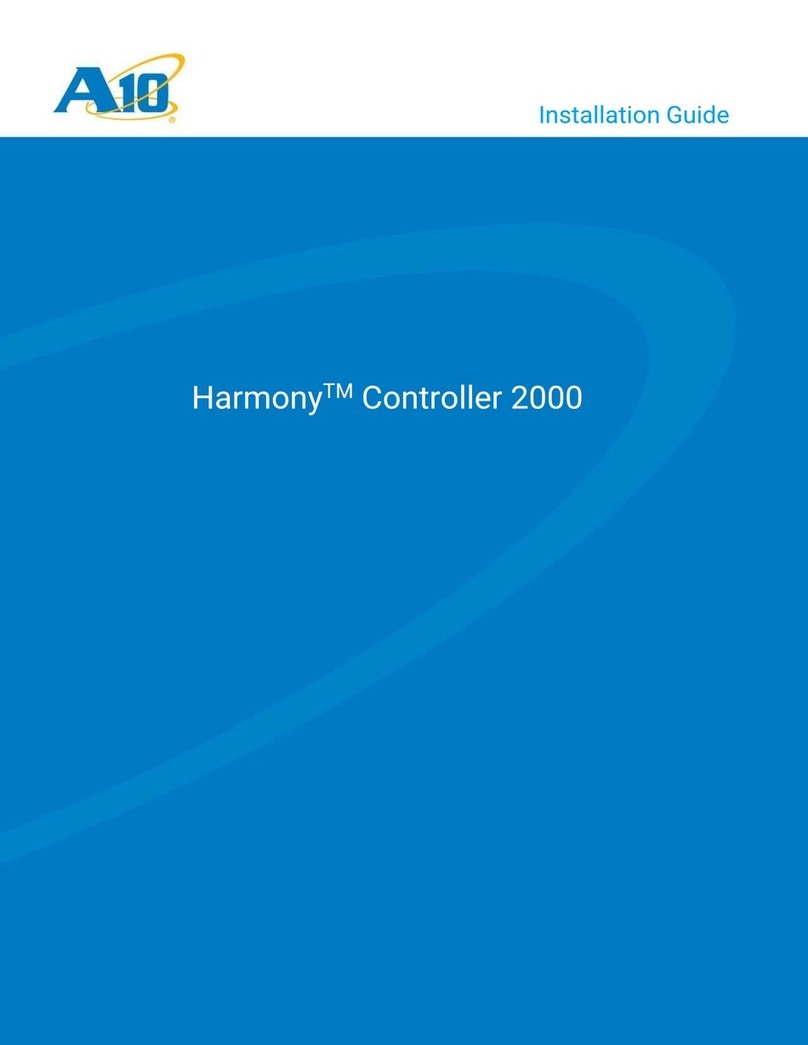
A10
A10 Harmony Controller 2000 installation guide
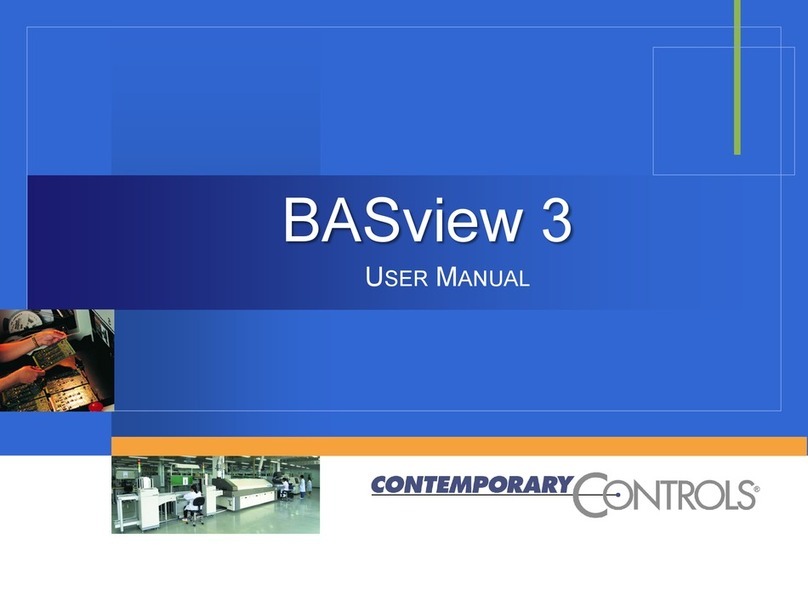
Contemporary Controls
Contemporary Controls BASview 3 user manual
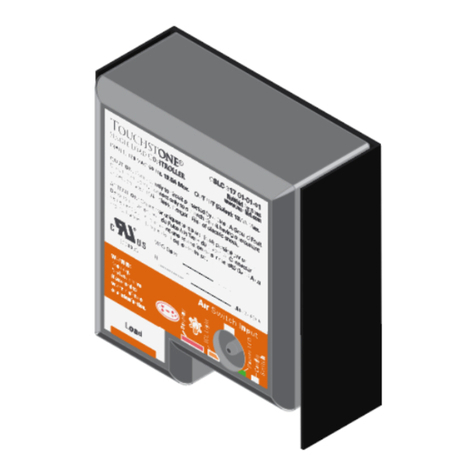
NuWhirl
NuWhirl TOUCHSTONE CSLC-317-02-01-01 Installation & operating manual
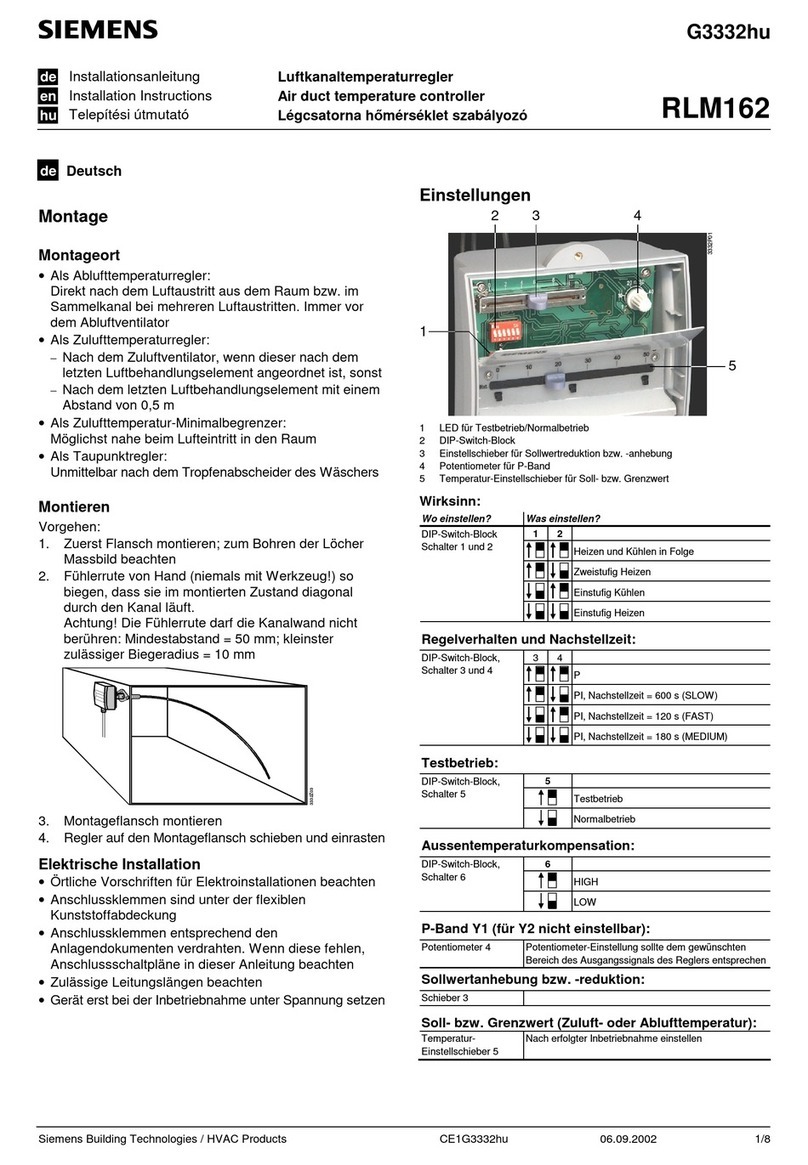
Siemens
Siemens RLM162 installation instructions
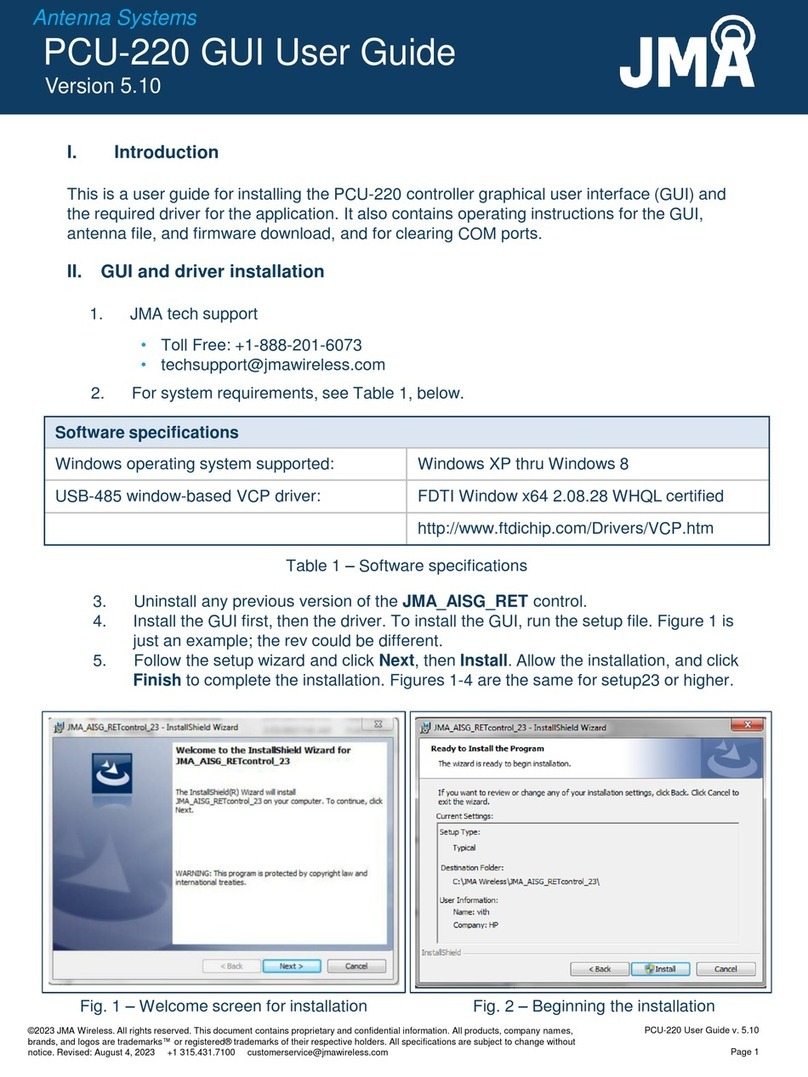
JMA
JMA PCU-220 GUI User Guide
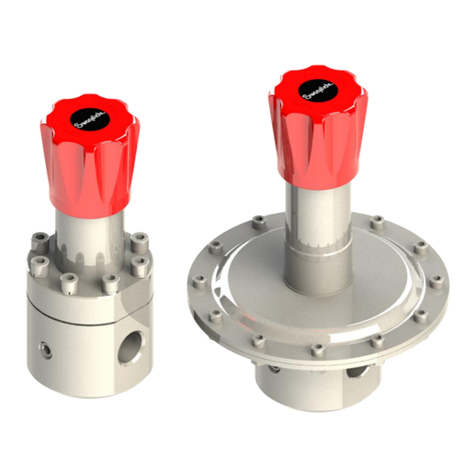
Swagelok
Swagelok RS Series user manual
